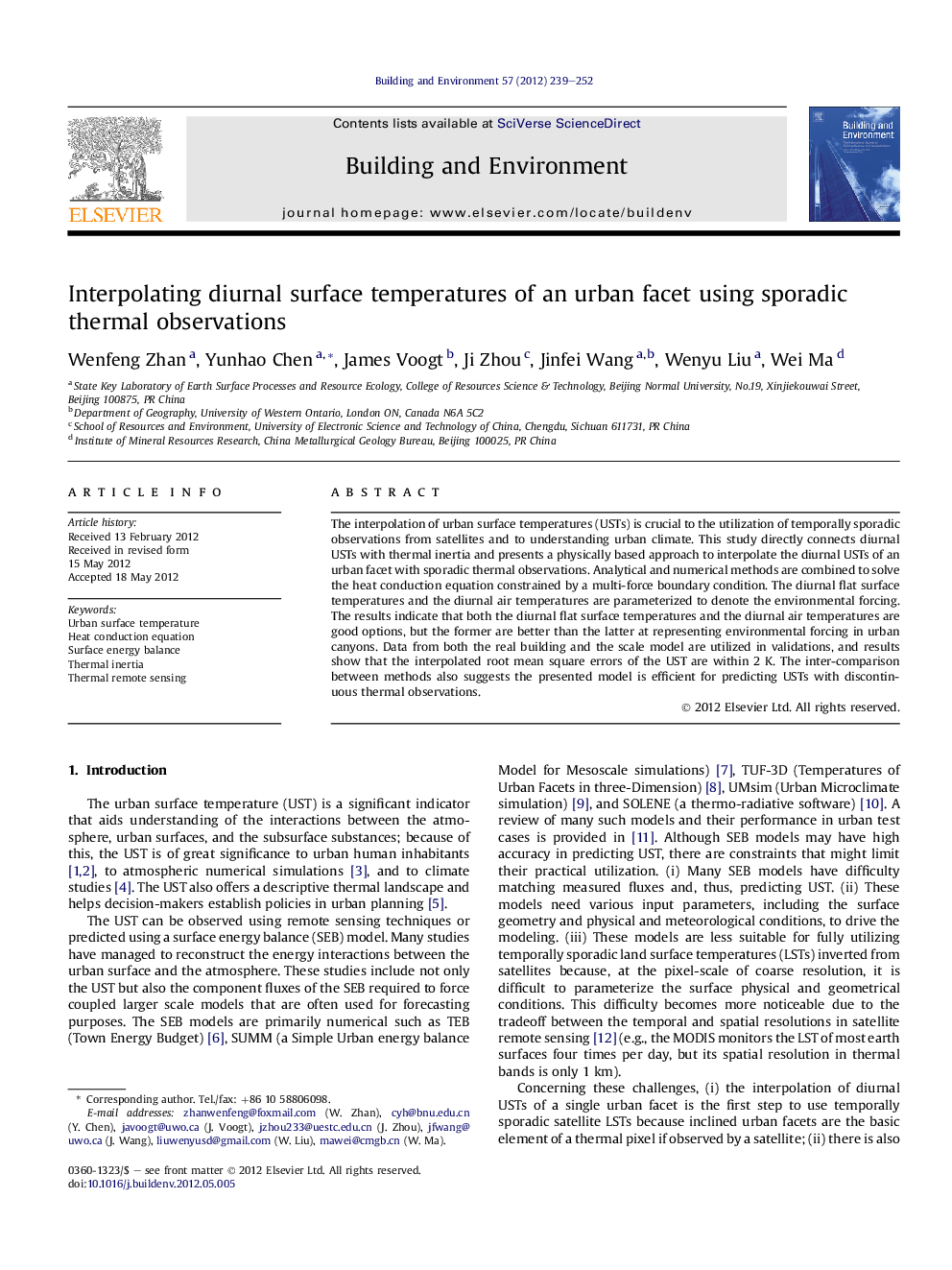| Article ID | Journal | Published Year | Pages | File Type |
|---|---|---|---|---|
| 248520 | Building and Environment | 2012 | 14 Pages |
The interpolation of urban surface temperatures (USTs) is crucial to the utilization of temporally sporadic observations from satellites and to understanding urban climate. This study directly connects diurnal USTs with thermal inertia and presents a physically based approach to interpolate the diurnal USTs of an urban facet with sporadic thermal observations. Analytical and numerical methods are combined to solve the heat conduction equation constrained by a multi-force boundary condition. The diurnal flat surface temperatures and the diurnal air temperatures are parameterized to denote the environmental forcing. The results indicate that both the diurnal flat surface temperatures and the diurnal air temperatures are good options, but the former are better than the latter at representing environmental forcing in urban canyons. Data from both the real building and the scale model are utilized in validations, and results show that the interpolated root mean square errors of the UST are within 2 K. The inter-comparison between methods also suggests the presented model is efficient for predicting USTs with discontinuous thermal observations.
► We present a physically based approach to interpolate diurnal surface temperatures of a single urban facet. ► The analytical and numerical methods are combined to solve the heat conduction equation under multiple forcing. ► We utilize diurnal flat surface temperatures and diurnal air temperatures to parameterize environmental forcing. ► The interpolated urban surface temperatures have a root mean square error within 2 K.
